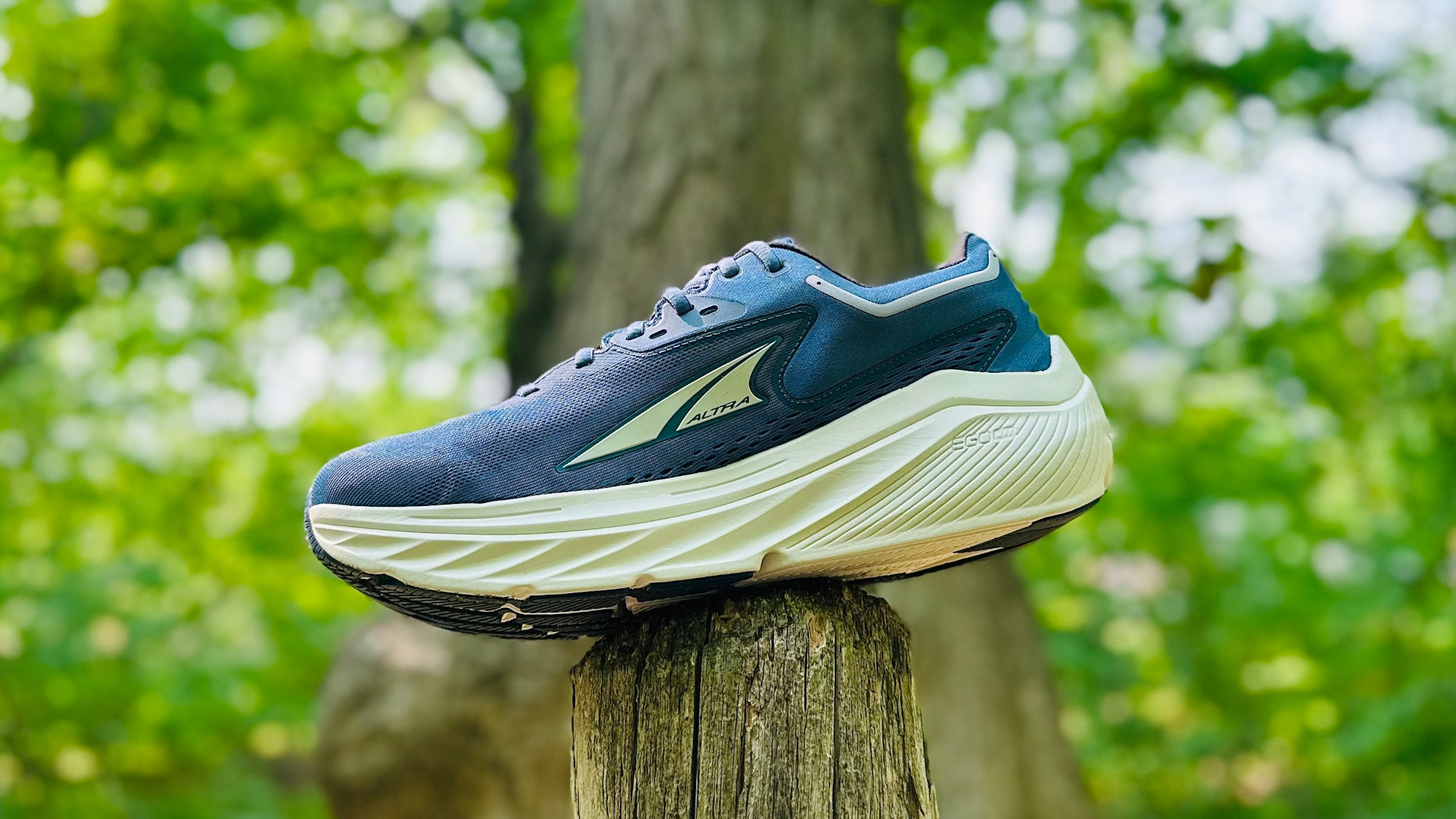
One of the major differences between running shoes is the amount of drop, also known as the offset. While there is no ideal drop—you’ll find both high and low drop options in our round-up of the best running shoes—runners tend to have a preferred offset that they stick to. If you’re new to the sport, it’s worth learning more about the topic when choosing between running shoes.
What Is Drop In Running Shoes?
The drop of a running shoe is the difference between the height of the footbed at the heel and the height at the forefoot. Most running shoes have chunky cushioning in the midsole so this stack is usually higher at the back of the shoe than the front.
Looking side-on, if you divide a shoe in half, the heel stack height is measured roughly halfway along the back half and the forefoot stack halfway along the front half. Subtract the forefoot stack from the heel stack and you get the drop.
What Is A High Drop Shoe, And What Is A Low Drop Shoe?
The overall range available is 0-15mm. Once, an offset between 10 and 12mm was classified as a high drop, but these days it’s more typical for a high drop to be between 8 and 10mm.
Low-drop shoes have an offset of 4-6mm and under, with the 6-8mm range being a no-man's land in between low and high drop. There are also zero-drop shoes that became popular with the rise of the barefoot running movement. These minimal shoes can still have big stacks of cushioning underfoot, but the heel and forefoot are the same height.
What Is The Difference Between High-Drop And Low-Drop Running Shoes?
Broadly speaking, low-drop shoes place more strain on the calf muscles since they require additional mobility in that area, while high-drop shoes keep the calf muscle in a shortened position but put more impact through the knee and hips.
It is often suggested that low-drop shoes work better for runners who land on the mid-forefoot first, while high-drop shoes are better suited to heelstriking runners.
However, the geometry of a running shoe involves more than just the drop. Rockers and other features change the feel of the shoe considerably. We now know that there’s more to a runner’s gait than which part of the foot hits the ground first, so it’s too simplistic to say that a certain drop will work for a runner based purely on footstrike.
Should You Wear High- Or Low-Drop Running Shoes?
We’ll start by reminding you that there is no perfect drop. If you are enjoying running in a shoe style then changing to a completely different drop is more likely to cause you problems than benefit you.
If you have a calf or achilles injury then there might be a potential benefit in using a higher-drop shoe, and conversely if you have knee or hip problems then using a low-drop shoe might help. But this is not set in stone, and speaking to a physiotherapist is the smart thing to do before switching your shoes.
Can You Use Both High And Low Drop Shoes?
If you are injury-free and don’t notice any problems when switching between shoe styles then it might be beneficial to wear a mix of drops as part of a running shoe rotation, since it will place different stresses on the body which could potentially reduce the risk of overuse injuries. However, it’s probably not wise to change the drop too drastically from day to day.
When we asked an expert if running is bad for your knees, his main advice for avoiding injuries in general was to train wearing a mixture of different shoe styles.
“You don’t want to use one pair of running shoes,” says professor Paul Lee, an orthopedic surgeon who is medical director at MSK Doctors. “Get different styles of shoes, have a mix of brands, so when you run, you challenge your whole-body biomechanics slightly differently. It will reduce the chance of you getting repetitive strain injuries.”







